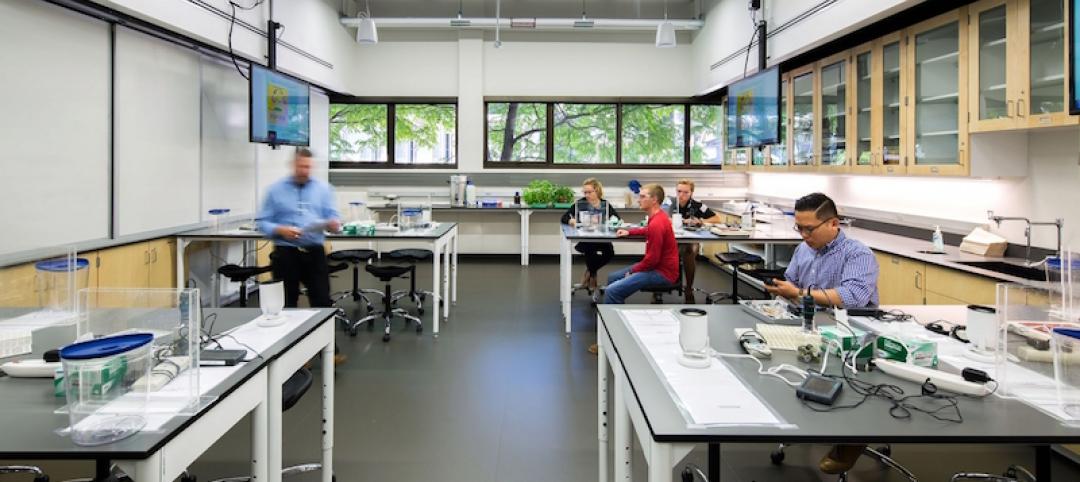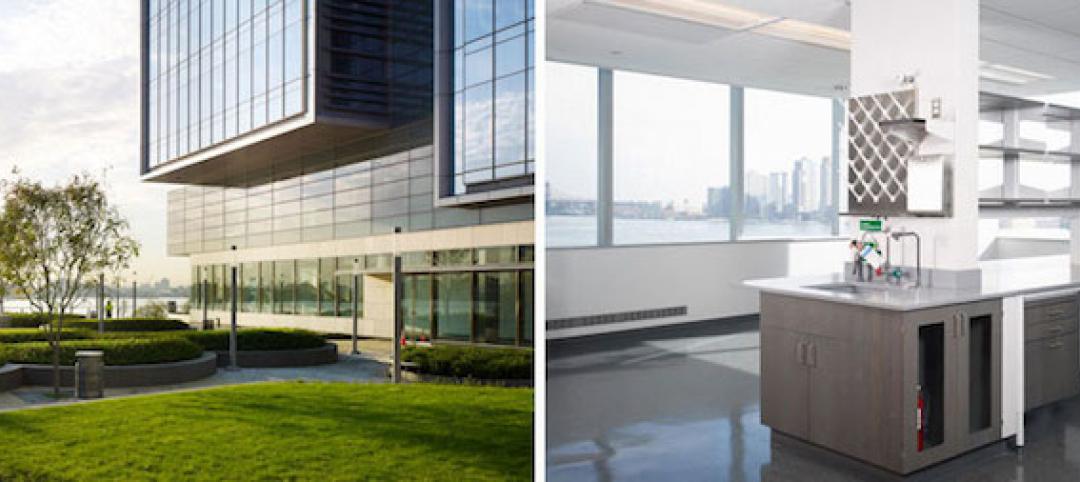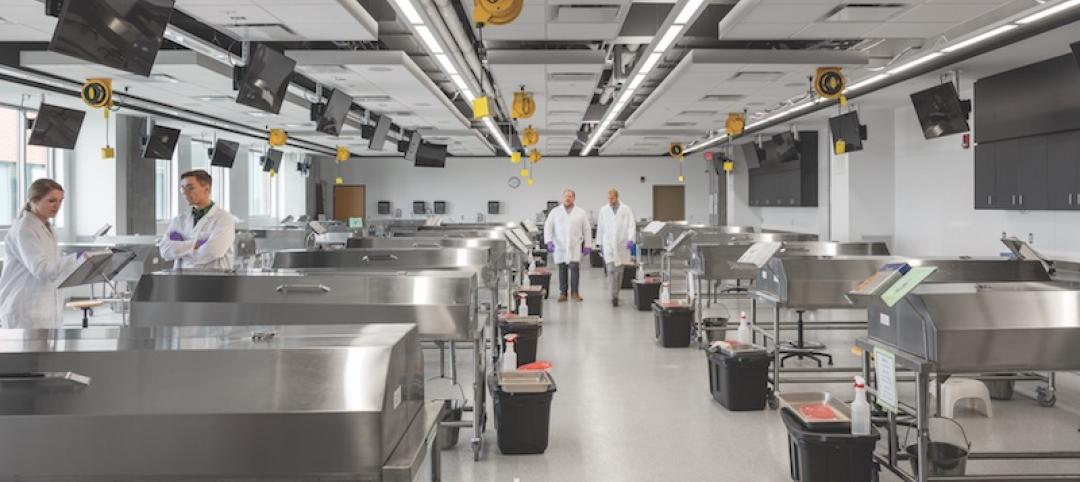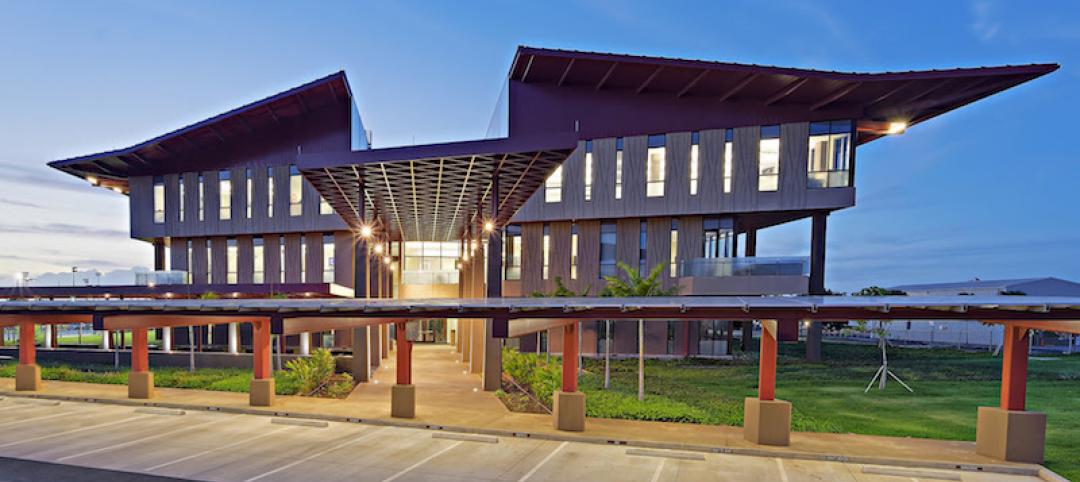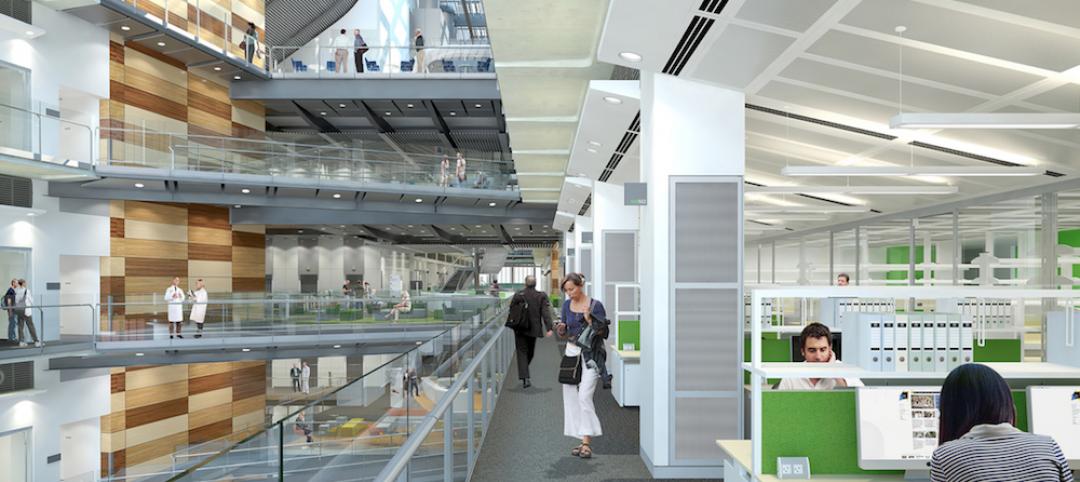Lab design has failed to keep pace with scientific advances and the changing needs of researchers. If, as expected, the next generation ushers in significant revolutions in the ways science is conducted, then lab design and operations, and the ways that scientists interact with these environments, will be at the heart of this change.
That is the scenario CBRE Global Workplace Solutions lays out in a just-released report, “Lab of the Future,” authored by Gregory Weddle, CBRE’s Vice President of Innovation and Products; and Hannah Hahn, its Global Workplace Innovation Manager.
The report draws heavily from a benchmarking study of labs that CBRE completed in 2014, which collected data from 24 labs in three global regions across four leading pharmaceutical companies. The report also reflects more than 68 lab professionals who responded to a questionnaire and contributed qualitative data on occupancy, instrumentation, spatial use, and collaborative space.
There are several reasons why labs need fresh design approaches. The era of the blockbuster drug discovery is past, and long-term trends lean toward personalized care, data-driven discovery, and digitization of lab spaces. “Hyper-flexible spaces that can be reconfigured as needs change will become more important.”
In addition, R&D is moving to lower-cost countries and to be closer to new markets. By 2025, two thirds of the world’s population could be living in Asia. Per-capita health spending in these markets today is significantly below Western levels. “The ability to collaborate quickly and efficiently among global locations will be more vital than ever.”
Indeed, CBRE sees organizations placing far more emphasis on speed to market and maximizing the use cost for their research facilities. “There is intense scrutiny on the return on investment for all R&D projects.”
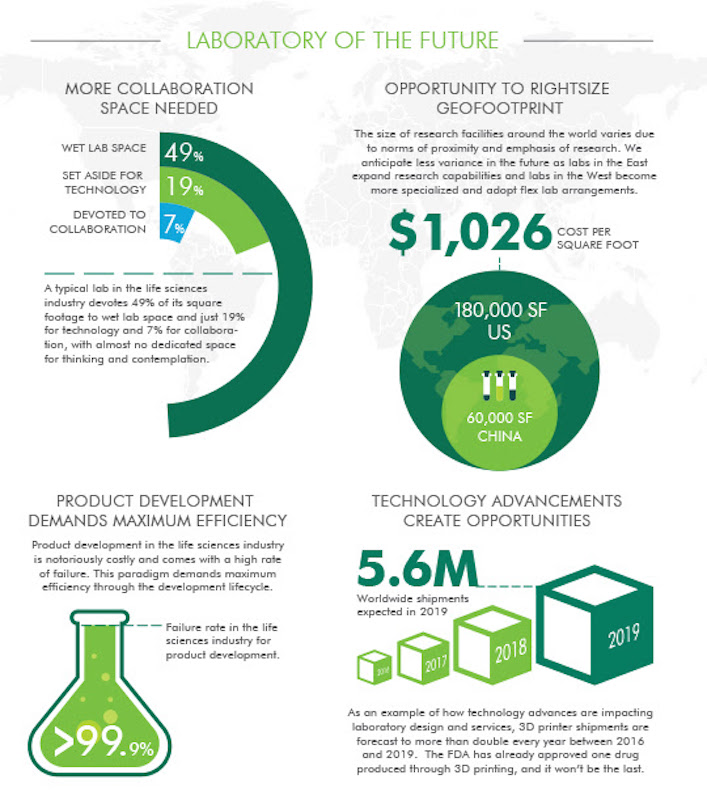
Future labs need to be adaptable to changing technologies, and be set up to deliver products quicker to market. Image: CBRE Global Workplace Solutions
CBRE says that, at the very least, organizations with lab space should be asking themselves:
• Does your organization have many large molecule products in its pipeline?
• Is your science focus changing?
• Is your organization well-funded?
• Is your organization able to attract the scientists it requires in timely fashion?
• How willing is my organization to adopt new processes?
“Business strategy, therefore, must drive laboratory strategy,” CBRE concludes.
Among the trends that the CBRE’s report cites include digital lab space, which reflects the new generation of researchers known as digital natives, who are accustomed to digital technology having grown up with it. Social technology is changing communication patterns within labs, leading to flatter structures based on specialty interests. And given that only 7% of current lab space is set aside for collaboration, future labs must allocate more area for researcher collaboration, enabled by technology and design concepts.
Standardization could be a key to making labs more efficient and amenable, says CBRE. “Modular planning principles will be used to create a collaborative, flexible lab floorplan that can be used as a rotating lab,” the report states. “This means each lab space must be essentially the same size to allow for changes in lab furniture, bench space and overall layout. Today’s (and tomorrow’s) labs are aided by the ability to prefabricate building elements.”
Other factors influencing the shifting utilization of lab space include the miniaturization of equipment, which has been going on for a while, and helps to make researchers more productive in less floor space. Automation and robotics, so-called “shy” technology that’s barely noticeble (such as devices that communicate with each other), 3D printing, and artificial intelligence will all play roles in lab design and space utilization.
CBRE points out that, as life sciences become more technologically focused, labs must be set up to handle the greater volumes of data. Currently about 20% of lab space is set aside for technology, and that will need to increase significantly over the next 25 years.
And adept, skilled facilities managers will be in demand to keeping labs functional. “Put simply, as the physical location of the lab and all of its equipment become more fluid, a team that keeps track of utilization, operation, and maintenance of equipment will play an important role,” the report states.
Related Stories
Laboratories | Sep 22, 2017
Designing for how we learn: Maker spaces and instructional laboratories
Here is how the See + Hear + Do = Remember mantra can be applied to maker spaces and instructional labs.
Laboratories | Sep 12, 2017
New York City is positioning itself as a life sciences hub
A new Transwestern report highlights favorable market and regulatory changes.
Laboratories | Aug 3, 2017
Today’s university lab building by the numbers
A three-month study of science facilities conducted by Shepley Bulfinch reveals key findings related to space allocation, size, and cost.
Laboratories | Jul 18, 2017
Pfizer breaks ground on new R&D campus in St. Louis suburb
The facility will consolidate the company’s local workforce, and provide flexible work and research spaces.
Building Team Awards | Jun 12, 2017
The right prescription: University of North Dakota School of Medicine & Health Sciences
Silver Award: North Dakota builds a new medical/health sciences school to train and retain more physicians.
Laboratories | Apr 13, 2017
How to design transformative scientific spaces? Put people first
While most labs are designed to achieve that basic functionality, a transformational lab environment prioritizes a science organization’s most valuable assets: its people.
Laboratories | Sep 26, 2016
Construction has finished on the world’s largest forensic anthropology lab, designed by SmithGroupJJR
The lab’s main purpose will be to help in the investigation, recovery, and accounting of Americans lost in past wars.
Laboratories | Jun 16, 2016
How HOK achieved design consensus for London's Francis Crick Institute
The 980,000-sf, $931 million facility is the result of a unique financing mechanism that brought together three of the U.K.’s heaviest funders of biomedical research—the Medical Research Council, Cancer Research UK, and the Wellcome Trust—and three leading universities—University College London, Imperial College London, and King’s College London.



